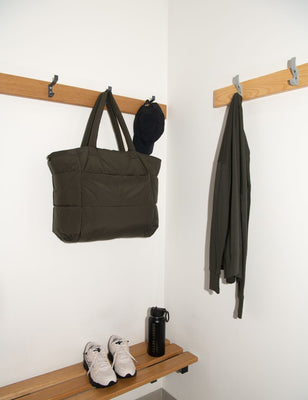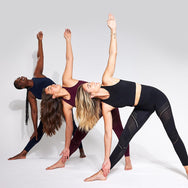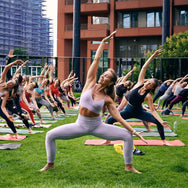
Despite organised races being put on hold for the foreseeable, the popularity of running has certainly not slowed down a bit. With social distancing measures still in place, many seasoned runners and new runners alike have laced up their trainers to pound the pavement more often.
If you’re new to running, you may be looking for ways to train beyond the first few miles you’ve logged before hitting a wall. Running farther without getting fatigued or injured takes a well balanced approach that considers more than planting one foot in front of the other (and repeat). Read on as this guide breaks down the top tips to help you build distance while running safely.
INCREASE MILEAGE GRADUALLY
Building distance into your runs should be a gradual process. Of course everyone is different, but dramatically increasing the distance of your runs will likely leave you burnt out before completing your goal, or possibly injured.
Two factors that play into safely building distance into your runs is consistency and stamina. Fortunately these pretty much exist in a positive feedback loop, so if you’re putting in the time for one, you’ll likely reap the benefits of both.
Consistency is key
As you begin to run more and more, you may find you’ve found a “sweet spot”, or a distance you know you can comfortably tackle. Make this your target to hit at least a couple times a week. The goal is to run these at fairly consistent times (this also means running them at a pace you can comfortably maintain!).
If you have a smartwatch, track the split of each kilometre you run and adjust your pace for consistency. If you don’t have a smart watch, you can measure your elapsed time on the route from start to finish with your phone. Training in this “sweet spot” multiple times a week builds your cardio strength and is critical for developing stamina so that you can bounce back a little easier each time.

Build stamina
Now that you’ve built a foundation of running a couple of times per week, you’ll start to really own that “sweet spot” of training we talked about.You may feel less tired after each session, you might find you’re able to push the pace a little more, perhaps you’re less winded, etc. This is the time to turn things up. If you’re running twice a week at the same distance, try adding a third day at that distance. Start to push the distance a bit. Or, add in a day of shorter intervals for a speed training session.
Many people swear by the rule of 10% for running. If you’re not familiar, the 10% rule states that one should only ever increase the mileage they run in a given week by 10%. Now, this rule may be beneficial in some instances, but it is more often a conservative tactic used to try and avoid injury when training for specific events. It’s a vague rule at best, and it doesn’t suit everyone.
For new runners, it’s more important to build up a baseline consistency, stamina and endurance needed to allow you to increase your distance. The mileage you log by the week does not necessarily need to be linear; mixing in a few speed sessions will have a positive effect on your longer distance goals too.
MINDSET
Running really is equal parts physical and mental fitness. When you’re going out for a longer run, alone with your thoughts, it can be easy to get caught up in distractions. You might find it’s difficult to think about anything other than the annoying click of your shoe laces that day, or that side stitch which won’t go away, or how tired you might be feeling going for your furthest run to date.
When these things happen, instead of letting these thoughts fester and ruin your run experience, acknowledge them and move on because this is exactly what you’ve been training for. Focus on controlling your breath, accept that there will be challenges in the road, but you’ve put in the training and you’re capable of overcoming them. You can do this.

RUN EFFICIENTLY
While you’re out there racking up the miles, it’s important to not just run more, but to run well. Being an efficient runner will improve your experience over all: you’ll see an improvement in your times as well as your perceived effort.
Form and footwear
Running efficiently involves good technique so that you don’t tire yourself unnecessarily or develop injuries from prolonged poor form. When running, take shorter strides and lifting and landing on the balls of your feet. Be sure to keep your shoulders back and chest up, this helps your lungs to open up and circulate oxygen to your body. Think of driving your elbows back rather than bringing your arms forward. Arms are often an overlooked component of running, but this tip is a free boost of power!
You should also have adequate running shoes to make the most of every session. Finding the right running shoe is extremely subjective, but good practice dictates they should be breathable, suitable for your footfall, and responsive to help you in your hard work. You can learn more about good running form footwear in our detailed guide on how to be a better runner for beginners.
Recovery
Getting enough rest is just as important as any training you do. Consider recovery a paramount part of your training plan. This allows your muscles to repair themselves, and you have time to let your body drain the lactic acid that forms from excursion. Be sure to stretch for 5-10 minutes after every run. And on your rest days, try doing some soothing yoga for an even deeper stretch.
Nutrition is an important part of recovery too, so make sure you are keeping up with daily supplements or the protein powder of your choice to aid recovery and help your body make the most of each training session.

CROSS TRAIN
Running quite literally has an impact on your body. The force from running on concrete, increasing distance, it all takes a toll on your body. For new runners especially, this can be a shock to the system. It’s important to develop strength and conditioning in key muscle groups to support your new activity and to keep you from getting injured.
Cross training will not only safeguard you from injury, but you’ll actually be able to perform better in your sport. Key strength training exercises work muscles that may be difficult to activate through the motion of running, but they ultimately support your performance, helping you to run well and feel great afterward.
CONCLUSION
Building distance while running safely can be achieved through a combination of diligent training, a healthy mentality, and athletic efficiency. If you’re new to the sport, these things may take some time, and they probably won’t come all at once. But remember, your training doesn’t have to be linear, it’s the time on feet that counts. By staying consistent, you’re already headed in the right direction.






























































